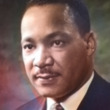The King years : historic moments in the civil rights movement
(Book)
Copies
| Location | Call Number | Status | Due Date |
|---|---|---|---|
| Courthouse - Adult Nonfiction | 323.0973 BRANC | Checked Out | May 14, 2025 |
Description
More Details
Notes
Excerpt
Similar Titles From NoveList
Similar Authors From NoveList
Published Reviews
Booklist Review
In this brief book, Pulitzer Prize-winner Branch draws on his Parting the Waters (1989), Pillar of Fire (1998), and At Canaan's Edge (2006) to recall the pivotal moments of the civil rights struggle. He focuses on 18 historical turning points, includingMartin Luther King's first public address, before the Montgomery bus boycott, in 1955; the March on Washington, in 1963; King's Nobel Peace Prize, in 1964; the expansion of the civil rights movement into an antiwar movement; the expansion of the struggle from the South to the North in the campaign to end segregated housing in Chicago; King's response to the rising black power movement; the antipoverty crusade, of 1967; and King's death in Memphis, in 1968. Each turning point is treated in a separate chapter that begins with a brief historical context that links them together. Photographs enhance this sweeping review of the civil rights movement and King's relationships with several major figures, including J. Edgar Hoover, John and Robert Kennedy, and President Johnson, as the movement broadened its scope from civil rights to human rights.--Bush, Vanessa Copyright 2010 Booklist
Publisher's Weekly Review
Branch (The Clinton Tapes) selects crucial scenes from his Pulitzer Prize-winning three-volume history, America in the King Years, to capture the turning points of the civil rights era. Covering the period from 1954 to 1968, Branch begins with Martin Luther King Jr.'s first major speech, given during the bus boycott in Montgomery, Ala., after Rosa Parks was arrested for refusing to surrender her seat and ends with King's assassination on a hotel balcony in Memphis. In between are vivid vignettes that convey the movement's growth: Freedom Rides, sit-ins, the murders of the voter registration workers in Mississippi, the bombing of a church in Birmingham, and the marches to Selma, Birmingham, and Washington, where King's "Dream" speech addressed a quarter of a million people. Branch highlights King's relationships with major figures, including activist Bob Moses; Stokely Carmichael and the Black Power movement; J. Edgar Hoover; and King's collaboration with President Lyndon Johnson on the 1964 Civil Rights Act, and their lack of agreement on the escalating war in Vietnam. He also illuminates how the passage of the Civil Rights Act realigned the political parties during the stormy political conventions in 1964. Though King is the central figure, this is not a biography, but rather a compressed narrative history that, despite its brevity, captures the evolution of a decisive period that changed America. Agent: Liz Darhansoff, Darhansoff & Verrill. (Jan.) (c) Copyright PWxyz, LLC. All rights reserved.
Library Journal Review
This work draws on Pulitzer Prize--winner Branch's best-selling Parting the Waters: America in the King Years, 1954-63; Pillar of Fire: America in the King Years, 1963-65; and At Canaan's Edge: America in the King Years, 1965-68 to sum up key moments of the Civil Rights Movement in one handy volume. (c) Copyright 2012. Library Journals LLC, a wholly owned subsidiary of Media Source, Inc. No redistribution permitted.
Kirkus Book Review
The quick-read version of the author's three-volume America in the King Years, focusing more on dramatic high points than narrative context. The best that can be said of this slim, digestible book is that Pulitzer winner Branch (The Cartel: Inside the Rise and Imminent Fall of the NCAA, 2011, etc.) was in charge, and he knows where to cut and how to stitch. As the title suggests, this is a series of scenes from the civil rights struggle, drawn from the three volumes of Branch's massive trilogy: Parting the Waters (1988), Pillar of Fire (1998) and At Canaan's Edge (2006). For students new to the subject (or readers in a hurry), this book gives a solid sense of how the civil rights movement grew under Martin Luther King Jr., from the day he was drafted to lead the Montgomery Bus Boycott in 1955 to his assassination on the steps of a Memphis motel in 1968. The chapters along the way hit all the watershed events: the Freedom Rides, the 1964 March on Washington, the murders of civil rights workers in Mississippi, the polarizing effect of the civil rights bill on the Republican and Democratic political conventions, FBI Director J. Edgar Hoover's poisonous campaign against King, the 1965 march from Selma to Montgomery, and the way a defiantly nonviolent movement splintered into more radical groups under Malcolm X and Stokely Carmichael. Branch seamlessly weaves together different parts from separate volumes to provide a coherent story in each chapter, and the stories are well-told but occasionally frustrating--readers will often want more. Though no substitute for the larger epic, the book is a reliable gloss on a troubling era.]] Copyright Kirkus Reviews, used with permission.
Booklist Reviews
In this brief book, Pulitzer Prize–winner Branch draws on his Parting the Waters (1989), Pillar of Fire (1998), and At Canaan's Edge (2006) to recall the pivotal moments of the civil rights struggle. He focuses on 18 historical turning points, includingMartin Luther King's first public address, before the Montgomery bus boycott, in 1955; the March on Washington, in 1963; King's Nobel Peace Prize, in 1964; the expansion of the civil rights movement into an antiwar movement; the expansion of the struggle from the South to the North in the campaign to end segregated housing in Chicago; King's response to the rising black power movement; the antipoverty crusade, of 1967; and King's death in Memphis, in 1968. Each turning point is treated in a separate chapter that begins with a brief historical context that links them together. Photographs enhance this sweeping review of the civil rights movement and King's relationships with several major figures, including J. Edgar Hoover, John and Robert Kennedy, and President Johnson, as the movement broadened its scope from civil rights to human rights. Copyright 2012 Booklist Reviews.
Library Journal Reviews
This work draws on Pulitzer Prize-winner Branch's best-selling Parting the Waters: America in the King Years, 1954–63; Pillar of Fire: America in the King Years, 1963–65; and At Canaan's Edge: America in the King Years, 1965–68 to sum up key moments of the Civil Rights Movement in one handy volume.
[Page 78]. (c) Copyright 2012. Library Journals LLC, a wholly owned subsidiary of Media Source, Inc. No redistribution permitted.Publishers Weekly Reviews
Branch (The Clinton Tapes) selects crucial scenes from his Pulitzer Prize–winning three-volume history, America in the King Years, to capture the turning points of the civil rights era. Covering the period from 1954 to 1968, Branch begins with Martin Luther King Jr.'s first major speech, given during the bus boycott in Montgomery, Ala., after Rosa Parks was arrested for refusing to surrender her seat and ends with King's assassination on a hotel balcony in Memphis. In between are vivid vignettes that convey the movement's growth: Freedom Rides, sit-ins, the murders of the voter registration workers in Mississippi, the bombing of a church in Birmingham, and the marches to Selma, Birmingham, and Washington, where King's "Dream" speech addressed a quarter of a million people. Branch highlights King's relationships with major figures, including activist Bob Moses; Stokely Carmichael and the Black Power movement; J. Edgar Hoover; and King's collaboration with President Lyndon Johnson on the 1964 Civil Rights Act, and their lack of agreement on the escalating war in Vietnam. He also illuminates how the passage of the Civil Rights Act realigned the political parties during the stormy political conventions in 1964. Though King is the central figure, this is not a biography, but rather a compressed narrative history that, despite its brevity, captures the evolution of a decisive period that changed America. Agent: Liz Darhansoff, Darhansoff & Verrill. (Jan.)
[Page ]. Copyright 2012 PWxyz LLCReviews from GoodReads
Citations
Branch, T. (2013). The King years: historic moments in the civil rights movement (1st Simon & Schuster hardcover ed.). Simon & Schuster.
Chicago / Turabian - Author Date Citation, 17th Edition (style guide)Branch, Taylor. 2013. The King Years: Historic Moments in the Civil Rights Movement. New York: Simon & Schuster.
Chicago / Turabian - Humanities (Notes and Bibliography) Citation, 17th Edition (style guide)Branch, Taylor. The King Years: Historic Moments in the Civil Rights Movement New York: Simon & Schuster, 2013.
Harvard Citation (style guide)Branch, T. (2013). The king years: historic moments in the civil rights movement. 1st Simon & Schuster hardcover ed. New York: Simon & Schuster.
MLA Citation, 9th Edition (style guide)Branch, Taylor. The King Years: Historic Moments in the Civil Rights Movement 1st Simon & Schuster hardcover ed., Simon & Schuster, 2013.































